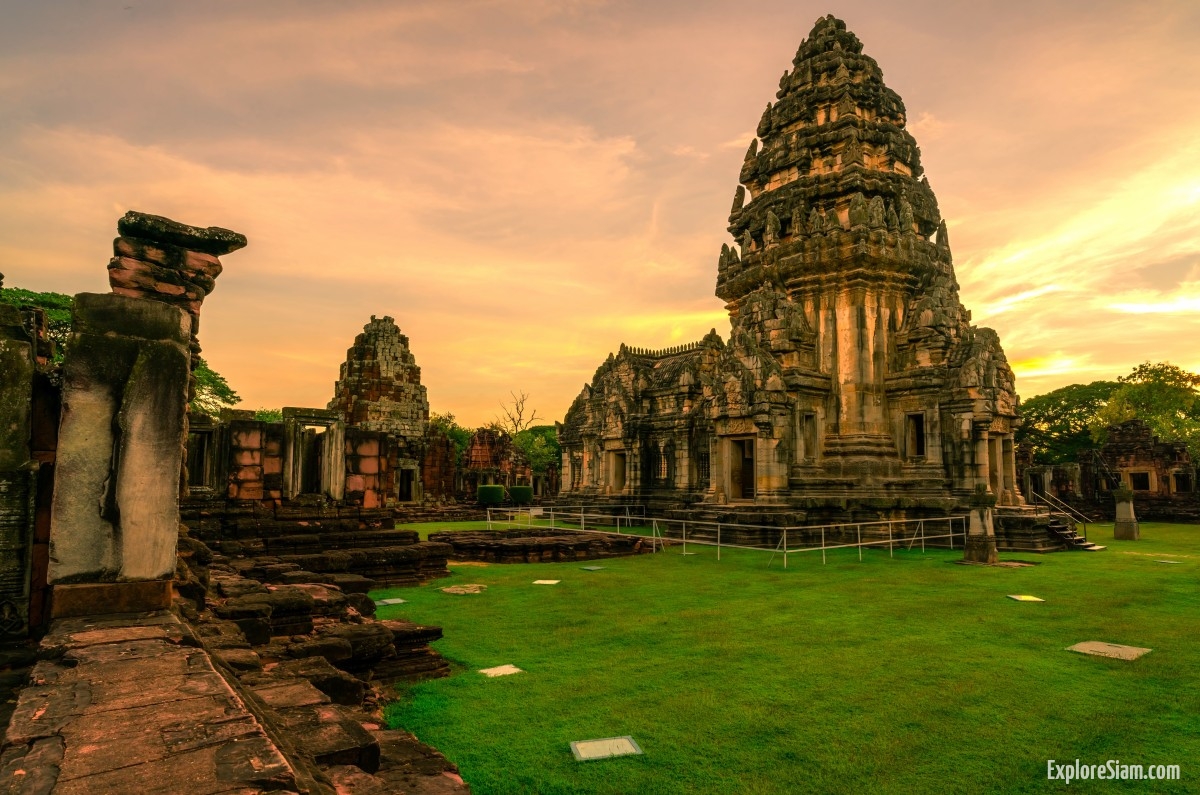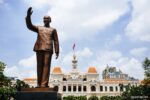Nestled in the northeastern region of Thailand, Phimai Historical Park stands as a testament to the grandeur and architectural brilliance of the Khmer Empire. This site, located in Nakhon Ratchasima Province, not only showcases the magnificent Prasat Hin Phimai but also the cultural and historical significance of an era long past. Visiting Phimai is akin to stepping into a time capsule, offering a rare glimpse into the majesty and spiritual essence of the Khmer civilization.
Phimai Historical Park was once a pivotal center of the Khmer Empire, a kingdom that stretched across much of Southeast Asia. The park is renowned for its exquisite Khmer temple complex, Prasat Hin Phimai, which is one of the largest and best-preserved examples of Khmer architecture in Thailand. This architectural marvel is thought to have been constructed during the late 11th century and was dedicated to the worship of Hindu deities, although later adaptations saw it used for Buddhist purposes as well.
As you approach the park, the grandeur of Prasat Hin Phimai comes into full view. The temple complex is aligned along a north-south axis, with its entrance facing south towards Angkor, the heart of the Khmer Empire. This alignment signifies the profound connection between Phimai and Angkor, emphasizing Phimai’s importance within the empire.
Entering through the grand Naga Bridge, adorned with multi-headed serpents that symbolize protection and connection between the earthly and divine realms, visitors are immediately struck by the intricate carvings and detailed bas-reliefs that adorn the temple structures. These carvings depict various scenes from Hindu mythology, including the churning of the ocean of milk, a classic story from Hindu lore. The artistry and craftsmanship evident in these carvings are a testament to the skill and devotion of the Khmer builders.
The central sanctuary, or prang, is the focal point of the temple complex. This towering structure is built in the distinctive Khmer style, with a cruciform base, steep staircases, and elaborate lintels. The sanctuary once housed a sacred linga, a symbol of Shiva, the Hindu god of destruction and regeneration. The interior of the sanctuary, though now largely empty, still evokes a sense of awe and reverence, a silent reminder of the religious fervor that once permeated this sacred space.
Beyond the temple complex, Phimai Historical Park offers visitors a chance to explore the serene and picturesque surroundings. One such attraction is Sai Ngam, also known as the “Beautiful Banyan”. This enchanting grove of banyan trees creates a natural canopy, with their sprawling roots and intertwined branches forming a maze-like network. Sai Ngam is not only a place of natural beauty but also a site of local folklore and tradition. It is believed that the spirit of a revered monk resides within the grove, adding a mystical dimension to its tranquil ambiance.
A visit to Phimai Historical Park is not complete without exploring the ancient city walls and gates that once protected this significant Khmer outpost. The walls, constructed from laterite blocks, stretch over 500 meters and are punctuated by four main gates. These gates served as critical points of entry and defense, underscoring the strategic importance of Phimai within the Khmer Empire’s vast network of cities and territories.
Phimai Historical Park is more than just an archaeological site; it is a living museum that offers insights into the religious, cultural, and architectural heritage of the Khmer Empire. The park’s serene atmosphere, combined with its historical significance, makes it a compelling destination for history enthusiasts, cultural explorers, and anyone seeking to connect with Thailand’s rich past.
For those planning a visit, Phimai Historical Park is accessible from Nakhon Ratchasima city, also known as Korat, by road. The journey itself is a scenic drive through the heart of Thailand’s northeastern countryside, adding to the overall experience. Once at the park, visitors can take advantage of guided tours, which provide in-depth knowledge and context about the site’s history and significance.
In conclusion, Phimai Historical Park stands as a remarkable monument to the ingenuity and spiritual devotion of the Khmer civilization. From the majestic Prasat Hin Phimai to the tranquil Sai Ngam, the park offers a unique blend of historical exploration and natural beauty. It is a destination that invites visitors to step back in time and immerse themselves in the legacy of one of Southeast Asia’s most influential empires.





